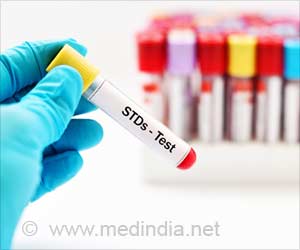Unlike being genital HPV positive, having HPV in your hand does not increase the risk of transmitting HPV to a sexual partner, finds a study.

‘Most of the HPV found in hands are likely from a person's own genital HPV infection, and hand-to-genital HPV transmission will not occur.’





HPV types in the hand generally match those in your own and your partner’s genitals explains Dr. Talía Malagón, a postdoctoral researcher at McGill under the supervision of Dr. Eduardo Franco in the Gerald Bronfman Department of Oncology, and the paper’s first author. This has led some researchers to hypothesize that hand-genital sexual contacts could be enough to transmit HPV infections. "Just because we detect HPV DNA in the hand doesn’t necessarily mean the viral particles are viable or that there is enough to cause an infection," notes Dr. Malagón. "The DNA might just have been deposited on the hand because a person recently had sex or touched their own genitals." While other studies have looked at HPV in sex partners’ hands before, the McGill study is the largest and the first to explicitly disentangle whether hand-to-genital HPV transmission can occur independently of genital-to-genital transmission. The results provide the strongest evidence to date that hand-to-genital HPV transmission is unlikely. "Indeed, we found that most HPV detected in the hand likely came from a person’s own genital HPV infection," says Dr. Franco, Chair of the Gerald Bronfman Department of Oncology at McGill and senior author on the paper.
Leveraging cohort from HITCH study
Having seen data from another research group showing that sex partners tended to have the same HPV types in both their hands and genitals, the researchers realized they could easily examine this question in their own HITCH study, but with a much larger sample size. "We found the same results as this previous study, but decided to take it a step further by controlling for infections in both the hands and the genitals to disentangle which had come first and whether it was the hand or the genital infections that were responsible for HPV transmission between partners," says Dr. Malagón.
The team recruited hundreds of heterosexual partners, who agreed to provide hand and genital samples every few months. They genotyped their samples for HPV DNA and analyzed their infection patterns over time to see who got infected where. Individuals were more likely to become HPV positive over time when their partner was HPV positive in the genitals or hands. However, we found that the risk of becoming infected was largely attributable to the partners’ genital HPV infection, and that once we accounted for this the risk of becoming infected was no longer correlated with HPV infections in the hands.
Advertisements
Vaccination remains the best means of defense
Advertisements
Source-Eurekalert











